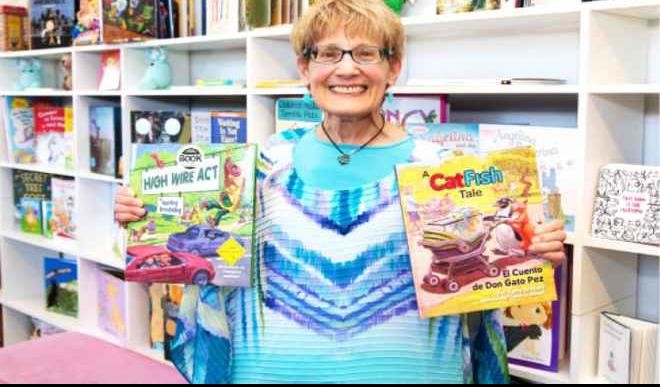American poet donates books to children, book club
An American poet and author, Kathy Brodsky has donated nine collection of children literature written by her to students and a book club in Nigeria. Oluwaseun Aina, the founder of the Magical Book Club, a Nigerian books club that has benefitted from Brodsky’s philanthropy said in Lagos, that “the books teach children to be friendly […]


An American poet and author, Kathy Brodsky has donated nine collection of children literature written by her to students and a book club in Nigeria.
Oluwaseun Aina, the founder of the Magical Book Club, a Nigerian books club that has benefitted from Brodsky’s philanthropy said in Lagos, that “the books teach children to be friendly even in the most bizarre and tempting circumstances.”
Aina who said she met Brodsky in 2016 during the International Literacy Association Conference held in Boston, United States explained that it was in further interaction with the American author that she expressed her willingness to donate books to the Magical Book Club for the promotion of children’s literature.
According to the book club founder, the books donated by Brodsky have indeed played essential roles in the development of the children because each f the books present a theme and style that depicts the scenario that children need to develop well.
She looks forward to donating more books to children in other countries of Africa and other parts of the world ensuring that each child finds it less challenging to cope with literary works that prepares them for higher stages of life. According to Kathy, “having spent a lot of time with children and books, I have come to realize that there are certain aspects that are missed out that makes it challenging for them and this is what I have put out in my books. By donating to book clubs and schools, more children would have access to the books.”
“Brodsky’s books refract a narrative style called a fable; this is a kind of narrative where a character within a story narrates the story. It is also called the ‘eye of the beholder’ or a story within a story. The form of the story is a framed story. Kathy deploys this technique to entertain or more usually to act as an example to the other characters. In either case the story often has symbolic and psychological significance for the characters in the outer story. The characters in virtually all narratives are animals.
“Apart from the intricate use of rhymes and pictorials, the author also employs a conversational approach to the art of storytelling. She explores universal themes that make her book transcend cultural and racial lines… Kathy is concerned about the growth and development of children; this is demonstrated through her style of literature in order for the children to learn the art of good writing and interaction,” Aina said.
